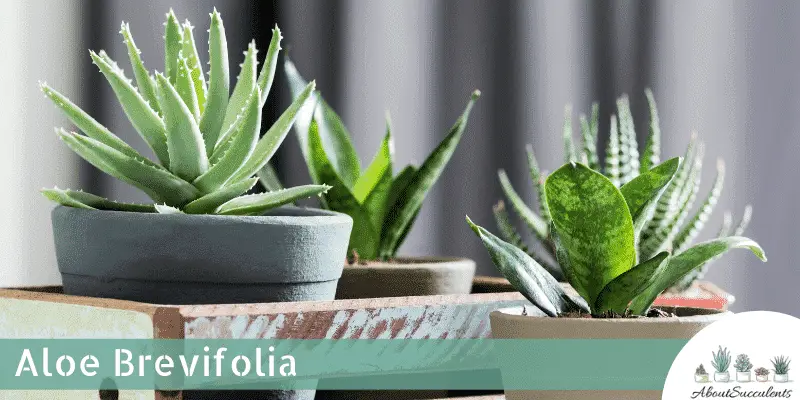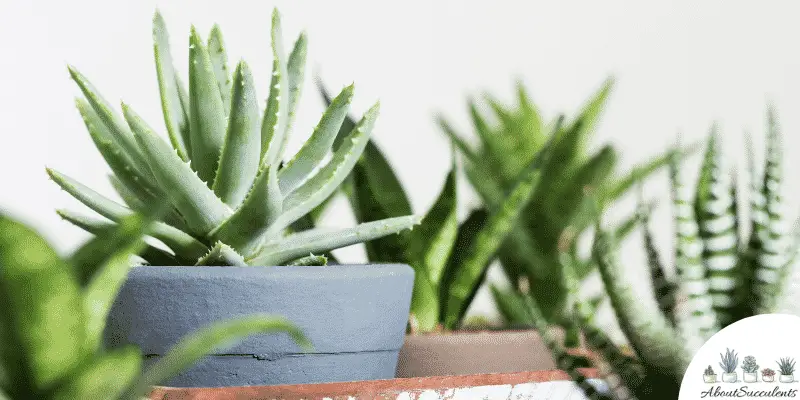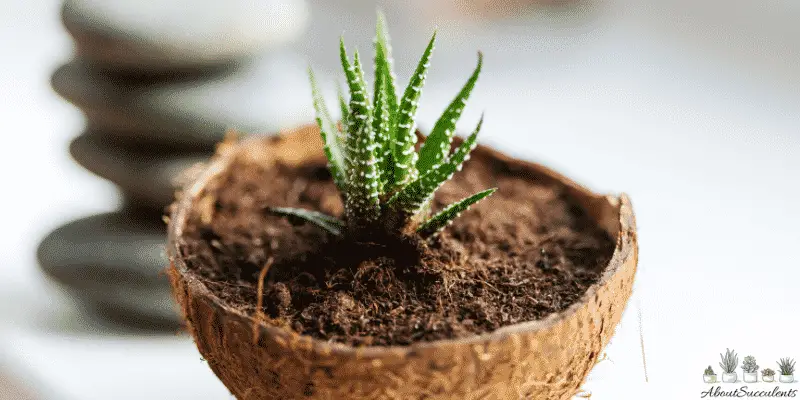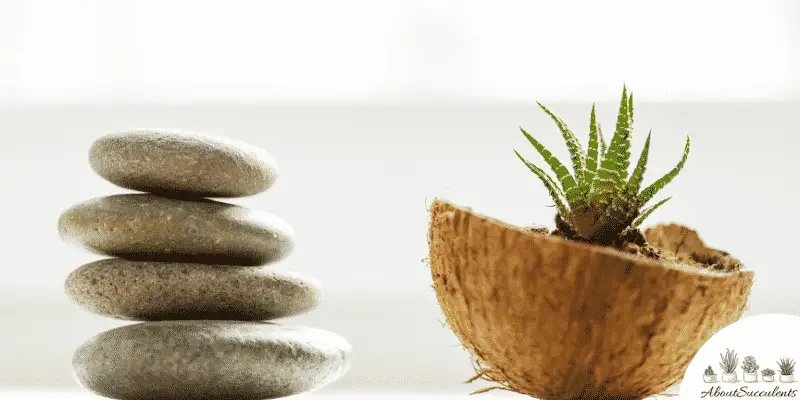
Aloe brevifolia is an interesting succulent with an intriguing alias of Crocodile Plant because it has the appearance of having white, jagged teeth alongside its edges. The friendlier and more popular nickname is Short-Leaved Aloe.
The “teeth” are short spikes that form a spine down the back of each leaf. The spikes are not dangerously sharp. However, Short-Leaved Aloe can be toxic to both humans and their pets.
Aloe brevifolia grows compact rosettes that can number up to 10 and reach up to 14-inches (40cm) in diameter. The leaves of the rosette are bluish in color but can change to pink during the winter.
Short-Leaved Aloe can reach a height of 12-inches (30cm) tall and comes from the Aloaceae family. It is native to South Africa.
General Information:
Also known as: Short-Leaved Aloe, Crocodile Plant
Plant Family: Aloaceae
Origin: South Africa
Height: 12-inches (30cm)
Exposure: Partial to full sunlight; 4 to 6 hours per day.
Water Needs: Water only when soil is dry to the touch, little watering during the winter and summer months.
Soil Type: Cactus soil mixed with ⅓ part sand, perlite or pebbles
Soil pH: Slightly acidic (7.0 to 8.5 pH)
Tolerance: Drought
How to Grow and Care for Aloe Brevifolia
Aloe brevifolia is popularly grown by horticulturists as a groundcover. Short-Leaved Aloe has its growth spurt during the spring and fall months then slows down or completely stops during the summer and winter.

1. Sunlight
Aloe brevifolia will reward you with beautiful leaves that are colored red, yellow, and bright orange if the succulent is given the right amount of sunlight exposure.
If grown as an outdoor succulent plant, place Short-Leaved Aloe in an area that gets 6 hours of morning sunlight every day.
You can also grow Aloe brevifolia as an indoor plant especially if you live in a region where the temperatures can drop below 20° F (-6.7° C).
As an indoor plant, Short-Leaved Aloe should be positioned near a window that gets 4 to 6 hours of sunlight per day. You can also place the succulent under a Grow Light to make sure it gets all the light it needs to grow properly.
2. Watering
As part of the Aloaceae family, Aloe brevifolia’s leaves tend to store enough water to keep it alive during prolonged dry months. This succulent is highly-tolerant to drought and does not require frequent watering.
The best way to water Short-Leaved Aloe is to wait for the soil to completely dry out. You can check if the topsoil feels dry to the touch. You can also insert a stick an inch into the topsoil.
If the stick feels dry after you’ve pulled it out of the soil, give Aloe brevifolia a deep drink or until the water starts to drip down the tray beneath the pot.
Restrict the watering schedule of Aloe brevifolia during the winter and summer months.
3. Pot and Soil
Choose a pot that is slightly larger, has a drainage hole, and one that is made of clay for Aloe brevifolia. A larger pot will allow its roots to grow properly and get enough air circulation. A clay pot does not go through the glazing process and encourages evaporation to remove excess moisture from the soil.

The best type of soil for Short-Leaved Aloe is one that is well-draining such as cactus. It is recommended that 1/3 of the soil mix must be composed of ingredients like sand, perlite or pebbles to further improve drainage.
How to Propagate Aloe Brevifolia
Horticulturists love Aloe Brevifolia because it is a fast propagator. There are 2 ways to propagate Aloe brevifolia: Offsets and seeds.
Method 1 – Offsets
Step 1: Aloe brevifolia produces many small offsets that sprout near the base of the plant. Gently pull up these offsets.
Step 2: Allow the offsets to completely dry and develop calluses. You can do this by placing the offsets in a dry and shaded area for a few days.
Step 3: Once the offsets have callused properly, you can replant them in well-draining soil.
Method 2 – Seeds
Step 1: Plant the seeds in well-draining soil.
Step 2: If you live in a cooler climate, propagate Short-Leaved Aloe indoors and after the seeds have been planted in well-draining soil, place it under a Grow Light.
Step 3: Water the soil once it is dry to the touch.

Frequently Asked Questions
Is Aloe Brevifolia Toxic for Cats and Dogs?
Aloe brevifolia does not appear in the list of plants that are toxic to cats and dogs that appear on the website of the American Society for the Prevention of Cruelty to Animals (ASPCA).
The list of toxic plants presented in the ASPCA’s website is only partial and may have overlooked other varieties of the genus Aloe.
If your pet ingested a part of Short-Leaved Aloe and started vomiting or showing signs of gastrointestinal distress, bring the animal to the veterinarian immediately.
Why is my Aloe Brevifolia Succulent Dying?
Aloe brevifolia is a worry-free succulent to grow. It can develop infection and a host of problems if you give Aloe brevifolia too much water.
Short-Leaved Aloe has typical watering needs of a succulent. Overwatering will lead to its demise because the roots of Aloe brevofilia will start to rot. Once the roots begin to rot, it will develop an infection that could spread throughout the plant.
If you see the leaves turn yellowish in color and appear mushy in texture, Short-Leaved Aloe could be dying because of overwatering.
Cut out the rotting sections of the plant with a sharpened and sterilized pair of garden shears. Remove the plant from the soil and look for the roots that are rotting. Use the garden shears to cut off the rotting roots,
Leave the plant to dry out before replanting Aloe brevifolia in fresh, well-draining soil.
Does Aloe Brevifolia Produce Flowers?
Aloe brevifolia produces flowers in the spring. The flowers vary in color from yellow to scarlet. The shape of the flowers is cylindrical and measure 30 to 40mm or 1 to 1.5-inches long.
Last Updated on June 10, 2022 by Sofia Lara